| Class: | angiosperms |
| Order: | Brassicales |
| Family: | Brassicaceae |
| Genus: | Brassica |
| Scientific name: | Brassica juncea (L.) Czern. |
| Name acc. to: | Gubanov 1996 |
| Herbar: | list records |
| Link to Flora of China: | http://www.efloras.org/browse.aspx?flora_id=2&name_str=Brassica+juncea |
| open map in a new window | 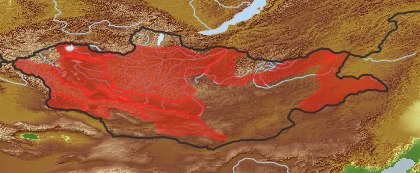 |
| Habitat: | River banks, nomad camps, inhabited areas, along roads, in crops as weed, barely in meadows (Grubov 2001). |
| Habit (i)general appearance of a plant | |
| Growth form: (i)Herb, shrub, tree or climber. | annual (i)Completing its life cycle within one year or one growing season; roots weak and thin
herb (i)Herbaceous, erect plant, up to 2m high, mostly with a leafy shoot; if perennial, shoots die to the ground each season, shoots are not woody
example: Artemisia pectinata   inherited by family Brassicaceae: herb inherited by family Brassicaceae: herb
|
| Special growth forms or habits: | rosette plant (i)All or nearly all leaves in a basal rosette, only inflorescences on erect stalks, these without or with much smaller leaves
example: Primula farinosa 
|
| Size of plant: (i)Attention: use flowering or fruiting specimens to assess plant height (many biennial plants possess only a basal rosette in the first year). | from 250 mm to 600 mm
from 600 mm to 1000 mm
from 1000 mm to 3000 mm
|
| Parasite status: (i)Is the plant a half- or full parasite? | no parasite/saprophyte (i)Plant fully autonomous, leaves with chlorophyll
example: Most plants, Ranunculus  inherited by family Brassicaceae: no parasite/saprophyte inherited by family Brassicaceae: no parasite/saprophyte
|
| Water or terrestrial plant: (i)Where do the plants grow? | terrestrial (i)Plant grows on dry land
example: Orostachys spinosa  inherited by family Brassicaceae: terrestrial inherited by family Brassicaceae: terrestrial
|
| Leaf (i)expanded, usually photosynthetic organ of a plant (including phylloclades) | |
| Leaf development: (i)Structure and development of leaves. | with green leaves (i)Plant with green leaves  inherited by family Brassicaceae: with green leaves inherited by family Brassicaceae: with green leaves
|
| Leaf arrangement: (i)Arrangement of leaves at the stem. | alternate (i)One leaf per node; distiche: arranged in two vertical rows, equitant
example: Phragmites    inherited by family Brassicaceae: alternate inherited by family Brassicaceae: alternate
basal rosette (i)Leaves positioned at the base of the stem; stem often without leaves, no visible internodes (but flowers often on erect stems, and these may have few leaves)
example: Limonium, Potentilla, Plantago; also used in Liliales with basaly crouwded leaves (Tofieldia, Zigadenus etc.)   inherited by genus Brassica: basal rosette inherited by genus Brassica: basal rosette
|
| Simple or divided leaves: (i)Are the leaves simple or completely divided in several parts? Blade of the leaf entire or (more or less) deeply dissected. Attention: There are various appearances of the leaf margin (from entire to toothed and lobed). Here, we ignore this and ask only for dissections that separate the leaf for more than one third of its length or width, whatever is smaller. Sometimes, it is difficult to tell apart compound leaves from a shoot system with simple leaves: look for stipulae and/or axillary buds at the ground of the leaves: if only some possess these structures, the others are most likely leaflets of a compound leaf. | simple (i)Non-divided leaf, but margin may be incised nearly to the ground 
pinnatisected, but simple leaf (i)Leaf divided to more than 1/3 of blade; there is a gradual transition from deeply divided leaves to pinnate leaves
example: Papaver 
|
| Shape of blade: (i)Easy for simple leaves. In compound leaves use the general shape of leaflet. Always check the ground for largest leaves of a plant. To be worked out: how to handle pinnate leaves? | elliptic (including ovate and obovate) (i)Elliptic: broadest at the middle and narrower at the two equal ends; ovate: egg-shaped, attached at the broad end; obovate: attached at the narrower end
example: Limosella aquatica 
lanceolate (i)Lance-shaped; much longer than wide, with the widest point in the middle or below 
linear incl.grasslike or oblong (i)Leaves more than two times longer than broad with more or less parallel margins; see character: stipule for ligula
example: Dracocephalum ruyschiana, Poaceae, Scutellaria scordifolia, Pinus 
|
| Length of leaves: (i)How long is the leaf, be carefull in compound leaves, measure the complete leaf. | more than 50 mm
|
| Width of leaves: (i)How broad is the leaf, be carefull in compound leaves, measure the complete leaf. | 1-3 cm
> 3 cm (i)6 arten prüfen
|
| Leaf margin: (i)Structure of leaf margin (or that of a leaflet in case of compound leaves). Attention: Here we ask for the leaf margin, defined as all those dissections that separate the leaf for less than one third of its length or width, whatever is smaller. To be worked out: how to handle margin of pinnate leaves? | serrate / dentate / crenulate (i)Margin saw-like or rounded teethed
example: Betula, Lophanthus (crenulate) 
entire (i)Plain margin, not toothed
example: Iris 
|
| Leaf base: (i)The angle the leaf blade forms with a real or imaginary (sessile leaves) petiole. Attention: Here, we consider only the base of leaves or leaflets (in case of compound leaves). | broad (i)Angle 30° - 90°
example: Cotoneaster 
cuneate (i)Tapering gradually, angle > 90° - 120°
example: Thalictrum, Betula fruticosa 
|
| Petiole: (i)Leaf divided into stalk (petiole) and blade. | with (i)Leaves with petiole (stalk) 
shorter than blade (i)Petiol shorter than leaf blade
|
| Stipule: (i)Leaflets at the base of the petiole, these are smaller and of different shape. | none (i)Without stipules
example: Euphorbia, Ericaceae s.l.  inherited by family Brassicaceae: none inherited by family Brassicaceae: none
|
| Leaf colour upper side: (i)Shades of green on the leaf, upper side. | green (i)Clear green
example: Tribulus terrestris
bluish (i)With bluish hues, (often due to wax layers)
example: Leymus arenarius
|
| Leaf colour lower side: (i)Shades of green on the leaf, lower side. | green (i)Clear green, in most species
example: Angelica decurrens
bluish (=glaucous?) (i)With bluish hues, (often due to wax layers)
example: Ligularia glauca
|
| Leaf veination: (i)Arrangement of the main veins of a leaf. | pinnate (i)One main vein, several side veins, sometimes inconspicuous
example: Cicerbita     inherited by family Brassicaceae: pinnate inherited by family Brassicaceae: pinnate
|
| Flower (i)reproductive portion of the plant, consisting of sepals, petals, stamens, and pistils | |
| Flower appearance and pollination: (i)General appearance of the flower. | attractive, animal-pollinated (i)attractive and coloured flowers, mostly large, attracting surely animals
example: Trollius, Rosa, Chamaerhodos  inherited by family Brassicaceae: attractive, animal-pollinated inherited by family Brassicaceae: attractive, animal-pollinated
|
| Flower colour: (i)Attention: assess colour of the most colourful parts of the flower, but not of the stamens; be aware of single plants with a mutation (mostly white) on flower colour. | yellow to orange (i)Pale to golden yellow
example: Ranunculus, Crepis
|
| Perianth arrangement: (i)Attention: in some plants, flowers may be dimorphic in different ways (dioecious or gynodioecious). If flowers vary, record the characters of the most showy flowers. | double, different (i)Two types of perianth leaves, differently coloured (sepals: outer periant leaves, usually greenish, and petals: inner perianth leaves, usually coloured)
example: Parnassia    inherited by family Brassicaceae: double, different inherited by family Brassicaceae: double, different
|
| Diameter of flower: (i)Diameter of flower or flower head. | from 10 mm to 20 mm (i)
example: Potentilla
from 20 mm to 40 mm (i)
example: Aquilegia
|
| Flower symmetry: (i)Symmetry of the perianth leaves. Attention: to assess this character, look on sepals, petals and stamens, but neglect carpels and ovary. | radiary, regular (actinomorphic) (i)More than two axis of symmetry
example: Saxifraga: 5; Iris: 3   inherited by family Brassicaceae: radiary, regular (actinomorphic) inherited by family Brassicaceae: radiary, regular (actinomorphic)
dicentric (i)Two axis of symmetry, take care of the arrangement of stamens
example: Hypecoum, Brassicaceae: six stamens with two in the outer circle   inherited by family Brassicaceae: dicentric inherited by family Brassicaceae: dicentric
|
| Flower form: (i)common forms of flowers ? Veronica | simple (flat) - Do not confuse with inflorescences as in some Asteraceae (i)Petals spread out, flower appearing flat
example: Mollugo, Trientalis, Pulsatilla, Saxifraga   inherited by family Brassicaceae: simple (flat) - Do not confuse with inflorescences as in some Asteraceae inherited by family Brassicaceae: simple (flat) - Do not confuse with inflorescences as in some Asteraceae
|
| Sepal number: (i)Number of sepal leaves (outer perianth leaves, calyx leaves, mostly greenish). Attention, this character applies only for flowers separated in sepals and petals, thus excluding most monocots. Be aware of the bracts (involucral leaves) of Asteraceae flowerheads, do not qualify these as sepals! Be also aware in Rosaceae is often an epicalyx developed, in this case count all parts. | 4 (i)
example: Sinapis  inherited by family Brassicaceae: 4 inherited by family Brassicaceae: 4
|
| Sepal fusion: (i)To which degree are the sepal leaves connected? Attention, this character applies only for flowers separated in sepals and petals, thus excluding most monocots. Be aware of the bracts (involucral leaves) of Asteraceae flowerheads, do not qualify these as sepals! | free (i)All leaves separate from each other
example: Geranium  inherited by family Brassicaceae: free inherited by family Brassicaceae: free
|
| Petal / Tepal number: (i)Number of petal leaves (inner perianth leaves, usually coloured). | 4 (i)
example: Galium  inherited by family Brassicaceae: 4 inherited by family Brassicaceae: 4
|
| Petal / Tepal fusion: (i)To which degree are the petal leaves connected? Petals sympetalous. | free (i)all petal leaves separate from each other
example: Anthriscus  inherited by family Brassicaceae: free inherited by family Brassicaceae: free
|
| Spur: (i)A hollow, slender, sac-like appendage of the perianth leaves, storing nectar. | no spur (i)Flower without appendage
example: Peganum  inherited by family Brassicaceae: no spur inherited by family Brassicaceae: no spur
|
| Stamen number: (i)Attention: We ask for the reproductive organs of the flower dispersing pollen. Count only fully fertile stamens, not staminodia (e.g. Parnassia). | 6 (i)
example: Veratrum, Smelowskia, Juncus  inherited by family Brassicaceae: 6 inherited by family Brassicaceae: 6
|
| Stamen fusion: (i)To which degree are the stamens fused? Attention: Whereas the pollen sacs itself are often free., their stalks (filaments) may be fused. Here, we count them as fused if they are together over at least one thirth of their length. | free (i)Stamens with separate bases
example: Malus  inherited by family Brassicaceae: free inherited by family Brassicaceae: free
|
| Pistil number: (i)Number of pistils (female floral organs: style, if developed; stigma and carpels/ovary together build the pistil). | 2 (i)Two stigmas, often cleaved like a snakes tongue
example: Salvia, Arnica, Bupleurum, Bromus, Saxifraga, Veronica  inherited by family Brassicaceae: 2 inherited by family Brassicaceae: 2
|
| Carpel number: (i)Number of carpels (carpel: forming a simple pistil or part of a compound pistil, modified leaf). | 2  inherited by family Brassicaceae: 2 inherited by family Brassicaceae: 2
|
| Carpel fusion: (i)To which degree are the carpels (modified leaf forming simple pistil or part of a compound pistil) fused. | fused (i)Carpels united into an ovary, only styles are free
example: Malus, Berberis  inherited by family Brassicaceae: fused inherited by family Brassicaceae: fused
|
| Style number: (i)Portion of the pistil connecting the stigma to the ovary. | 1  inherited by family Brassicaceae: 1 inherited by family Brassicaceae: 1
|
| Ovary position: (i)For entirely or partly fused carpels, describe their position in relation to the insertion point of perianth leaves (best done by doing a longitudinal section of a flower). | superior (hypogynous) (i)Base of carpels attached above insertion point of perianth leaves, carpels free or fused
example: Delphinium, Anemone    inherited by family Brassicaceae: superior (hypogynous) inherited by family Brassicaceae: superior (hypogynous)
|
| Sex: (i)Distribution of male and female organs among flowers, only most commonly cases. | bisexual, hermaphrodite (i)All or nearly all flowers of a plant with male and female parts
example: Haplophyllum, Chenopodium  inherited by family Brassicaceae: bisexual, hermaphrodite inherited by family Brassicaceae: bisexual, hermaphrodite
|
| Inflorescence (i)flowering part of a plant, describes the arrangement of the flowers on the flowering axis | |
| Inflorescence: (i)Structure of the inflorescence. | Flowers in inflorescence (i)No solitary flowers  inherited by family Brassicaceae: Flowers in inflorescence inherited by family Brassicaceae: Flowers in inflorescence
Simple inflorescences (i)Flowers sessile on a main shoot or on short to long not branched side shoots
example: Polygonum bistorta    inherited by family Brassicaceae: Simple inflorescences inherited by family Brassicaceae: Simple inflorescences
|
| Appearance: (i)Outer look of the inflorescence. | terminal (i)Inflorescence is the highest point of the plant and may consist of a single flower only
example: Cypripedium, Rhaponticum, Ligularia sibirica, Echinops  inherited by family Brassicaceae: terminal inherited by family Brassicaceae: terminal
|
| Inflorescence type: (i)Types of inflorescence. Attention: We here ask for the botanical nomenclature of inflorescences, which is sufficiently complicated. Tick only, if you are certain, or tick all inflorescence types that appear similar of these of the plant in question. | raceme (i)Stalked flowers arranged along a simple main axis, often one by one in the axils of leaves, maturing from bottom upwards
example: Aconitum barbatum   inherited by family Brassicaceae: raceme inherited by family Brassicaceae: raceme
|
| Fruit (i)the seed bearing organ, with or without adnate parts; a ripened ovary and any other structures which are attached and ripen with it. Aggregate fruits are handled like simple fruits for determination. | |
| Consistency: (i)Fleshy fruits or dry fruits, see dispersal adaptations for further classification. | dry (i)With a dry outer shell, no fleshy parts, but seed (embryo) could be edible  inherited by family Brassicaceae: dry inherited by family Brassicaceae: dry
|
| Type of fruit: (i)Common fruit types (including pseudocarp). | Solitary fruits (i)     inherited by family Brassicaceae: Solitary fruits inherited by family Brassicaceae: Solitary fruits
Dehiscent fruits (i)Fruits open along a longitudinale line (except silicula)  inherited by family Brassicaceae: Dehiscent fruits inherited by family Brassicaceae: Dehiscent fruits
silique (i)Dry fruit, opening with two valves and a separating wall inbetween
example: Brassicaceae, Hypecoum    inherited by family Brassicaceae: silique inherited by family Brassicaceae: silique
|
| Opening of fruit: (i)Mode of dehiscence at maturity to release seeds. | opening along dehiscent line (i)Opening along a preformed line
example: Vicia, Lathyrus: pods  inherited by genus Brassica: opening along dehiscent line inherited by genus Brassica: opening along dehiscent line
opening / dehiscent (i)Dry? Fruits opening with different types  inherited by genus Brassica: opening / dehiscent inherited by genus Brassica: opening / dehiscent
|
| Size of fruit: (i)Size of the fruit including appendage. | more than 10 mm (i)
example: Malus: wild apple
|
| Dispersal: (i)Appearance of fruit or seed (if single) and adaptations to dispersal. | Otherwise (i)All parts dry, no conspicuous adaptations  inherited by family Brassicaceae: Otherwise inherited by family Brassicaceae: Otherwise
|
| Hairs | |
| Has hairs?: | has hairs
|
| Root / shoot below ground (i)plant part below ground (in most cases), including below ground shoots, without leaves | |
| Root type: (i)Organisation of the roots. | allorhizous (i)Plant with a conspicuous tap root, one larger tap root with side roots
example: Dicotyledonae  inherited by order Brassicales: allorhizous inherited by order Brassicales: allorhizous
|
| Distribution (i)region where the plant is likely to be found | |
| Distribution (Veg. Zones): (i)acc. to Grubov 1952 | Khangai (i)In distribution data often named as '3' 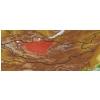
Mongol-Daurian (i)In distribution data often named as '4' 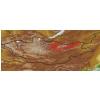
Mongolian Altai (i)In distribution data often named as '7' 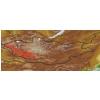
East Mongolia (i)In distribution data often named as '9' 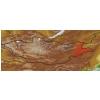
Depression of Great Lakes (i)In distribution data often named as '10' 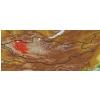
Valley of Lakes (i)In distribution data often named as '11' 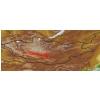
Gobi-Altai (i)In distribution data often named as '13' 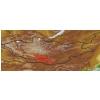
Dzungarian Gobi (i)In distribution data often named as '14' 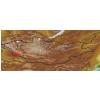
|
| Distribution Khangay: (i)acc. Flora Khangaya 1989 | V
|
| Brassicaceae (i)special features within family | |
| Fruit type: | silique long (i)Fruit 3 times longer than wide
example: Sisymbrium 
|
| Fruit arrangement: | strict (i)Erect, upwards
|
| Fruit form / cross section: (i)flatt or roundish fruits | round (i)Cross section circled
|
| Fruit wings: | without wings
|
| Fruit length-form: | straight
|
| Fruit surface: | tuberculate (i)
example: Brassica, Tubularia
|
| Fruit hairs: | glabrous
|